In the diverse world of snake adaptations, few behaviors are as fascinating as the tail-vibrating mimicry performed by certain non-venomous species. While rattlesnakes are famous for their specialized tail rattles that produce a distinctive warning sound, several other snake species have evolved a remarkable form of Batesian mimicry – they rapidly vibrate their tails against dry leaves or other debris to create a sound remarkably similar to a rattlesnake’s warning. This clever evolutionary adaptation helps these harmless snakes appear more dangerous than they are, potentially deterring predators that have learned to avoid rattlesnakes. This article explores this fascinating behavior, the species that employ it, and the evolutionary advantages it provides in the constant struggle for survival in the natural world.
The Masters of Deception: Eastern Rat Snakes
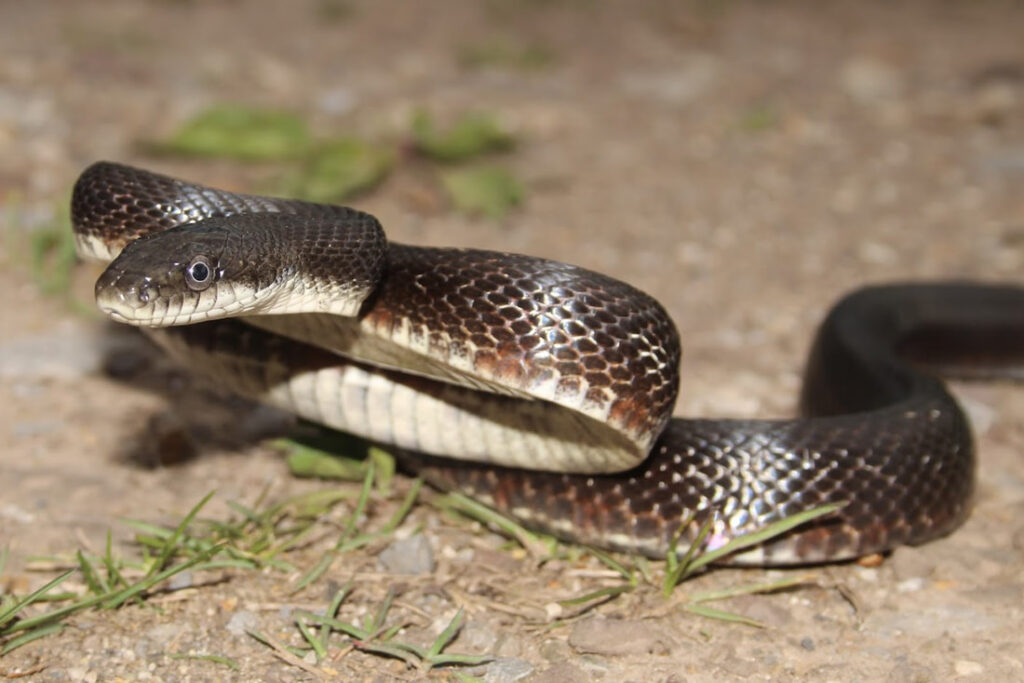
The Eastern rat snake (Pantherophis alleghaniensis), formerly known as the black rat snake, is perhaps the most well-known practitioner of rattlesnake mimicry in North America. When threatened, these non-venomous constrictors will rapidly vibrate their tail against dry leaves, creating a convincing rattling sound that can startle potential predators. Unlike actual rattlesnakes, Eastern rat snakes possess no specialized rattle segments; instead, they rely entirely on environmental objects to amplify their tail movements. This behavior is most commonly observed when the snake feels cornered or threatened, serving as a last line of defense before the snake might need to strike defensively. Eastern rat snakes are excellent climbers and can be found throughout the eastern United States in a variety of habitats, making this mimicry behavior widely distributed across North American ecosystems.
Milk Snakes: Red, Black, and Deceptive
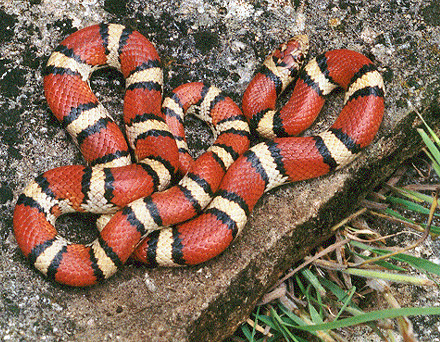
Milk snakes (Lampropeltis triangulum), with their vibrant red, black, and sometimes yellow or white banding patterns, already employ one form of mimicry by resembling the venomous coral snake in certain regions. Adding to their arsenal of deceptive tactics, many milk snake subspecies will also rapidly vibrate their tails when threatened. The sound produced when their tail contacts dry leaves or debris closely resembles a rattlesnake’s warning, creating a multi-sensory deception that combines visual similarity to one dangerous species and acoustic similarity to another. This dual mimicry strategy potentially provides milk snakes with protection against a wider range of predators that might recognize either coral snakes or rattlesnakes as dangerous. Common throughout much of North and Central America, milk snakes have refined these deceptive techniques across their extensive range, adapting to local predator recognition systems.
The Evolutionary Advantages of Sound Mimicry
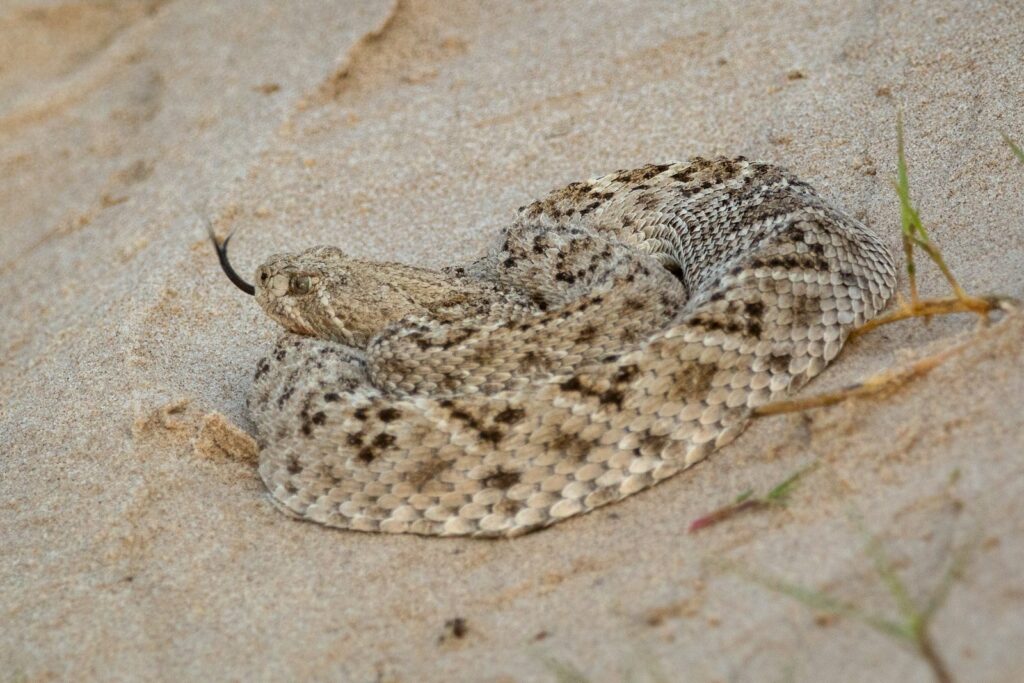
The evolution of rattlesnake sound mimicry represents a fascinating example of Batesian mimicry, where a harmless species imitates the warning signals of a dangerous one. This adaptation provides significant survival advantages for non-venomous snakes that may otherwise be vulnerable to predation. By creating sounds that potential predators associate with dangerous rattlesnakes, these mimics can often escape dangerous encounters without having to rely on costly defensive measures like biting or fleeing. The effectiveness of this mimicry depends heavily on the presence of actual rattlesnakes within the ecosystem, as predators must learn to associate the rattling sound with danger through direct experience or innate fear responses. Interestingly, research suggests that in areas where rattlesnakes are abundant, the mimicking behavior in non-venomous species tends to be more common and more convincingly performed.
Fox Snakes: Northern Rattlesnake Impersonators
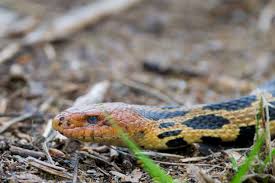
Fox snakes (Pantherophis vulpinus and Pantherophis gloydi) are masterful rattlesnake mimics found primarily in the upper Midwest of the United States and parts of Canada. When threatened, these harmless constrictors will coil defensively, flatten their heads to appear more triangular like venomous species, and vigorously vibrate their tails against leaf litter. This performance creates a convincing illusion that has fooled many humans and likely countless natural predators over evolutionary time. Fox snakes face particular challenges, as their yellowish-brown coloration with dark blotches can sometimes resemble timber rattlesnakes, making them targets for fearful humans who mistake them for venomous species. Their mimicry may have evolved not just for protection against natural predators but also as a defense against human persecution, highlighting the complex evolutionary pressures facing these snakes.
Gopher Snakes: Western Rattler Doppelgängers
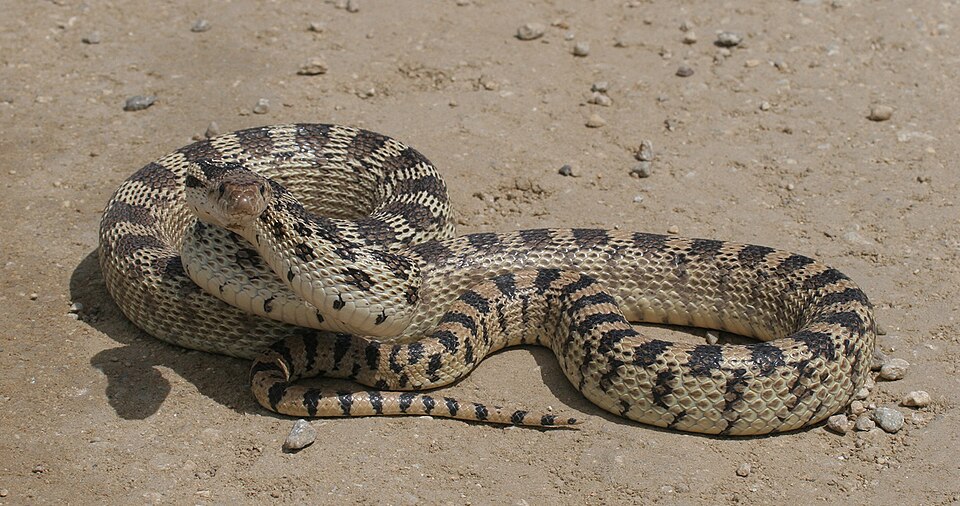
Gopher snakes (Pituophis catenifer), particularly the subspecies known as bullsnakes, are renowned for their elaborate rattlesnake impersonations in the western United States. When threatened, these large constrictors not only vibrate their tails against dry vegetation but also flatten their heads, inflate their bodies, and hiss loudly while exhaling. The hissing sound, combined with the vibrating tail against leaf litter, creates a multi-sensory deception remarkably similar to a western diamondback or other rattlesnake species. Gopher snakes often share habitat with actual rattlesnakes, making their mimicry particularly advantageous against local predators that have learned to avoid venomous species. This behavioral adaptation may have evolved independently in gopher snakes as a response to similar evolutionary pressures facing other mimicking species across North America.
Hognose Snakes: Theatrical Performers

Eastern hognose snakes (Heterodon platirhinos) are perhaps the most dramatic defenders in the snake world, employing a repertoire of behaviors that include tail vibration against leaves as part of their elaborate defensive display. When threatened, a hognose snake may first flatten its neck like a cobra, hiss loudly, and make bluff strikes with a closed mouth. If these tactics fail to deter a predator, the snake will often vibrate its tail in leaf litter, creating a rattlesnake-like sound as yet another warning signal. Should all these warnings fail, hognose snakes resort to their famous “death-feigning” behavior, rolling onto their backs with mouths open and tongues hanging out, playing dead until the threat passes. This progression of defensive behaviors showcases how tail vibration fits into a complex suite of anti-predator adaptations that have evolved in this species.
Pine Snakes: Southeastern Mimics
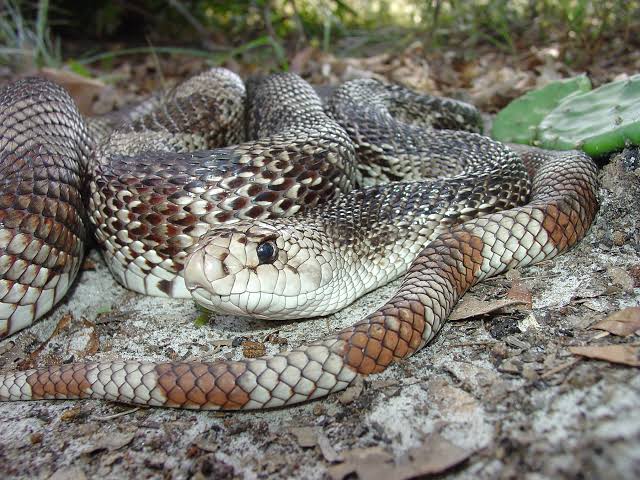
Pine snakes (Pituophis melanoleucus), close relatives of gopher snakes, employ similar rattlesnake mimicry behaviors when they feel threatened. These large, powerful constrictors will vibrate their tails rapidly against forest floor debris, creating a convincing rattling sound that can deter potential predators. Pine snakes add to this deception by also loudly hissing and inflating their bodies to appear larger and more intimidating, creating a multi-sensory deterrent. Found primarily in the southeastern United States, pine snakes occupy habitats that often overlap with those of timber rattlesnakes and eastern diamondbacks, making their mimicry particularly effective against local predators. Despite their impressive defensive displays, pine snakes face significant population declines due to habitat loss, making conservation of these remarkable mimics increasingly important.
The Science Behind the Sound
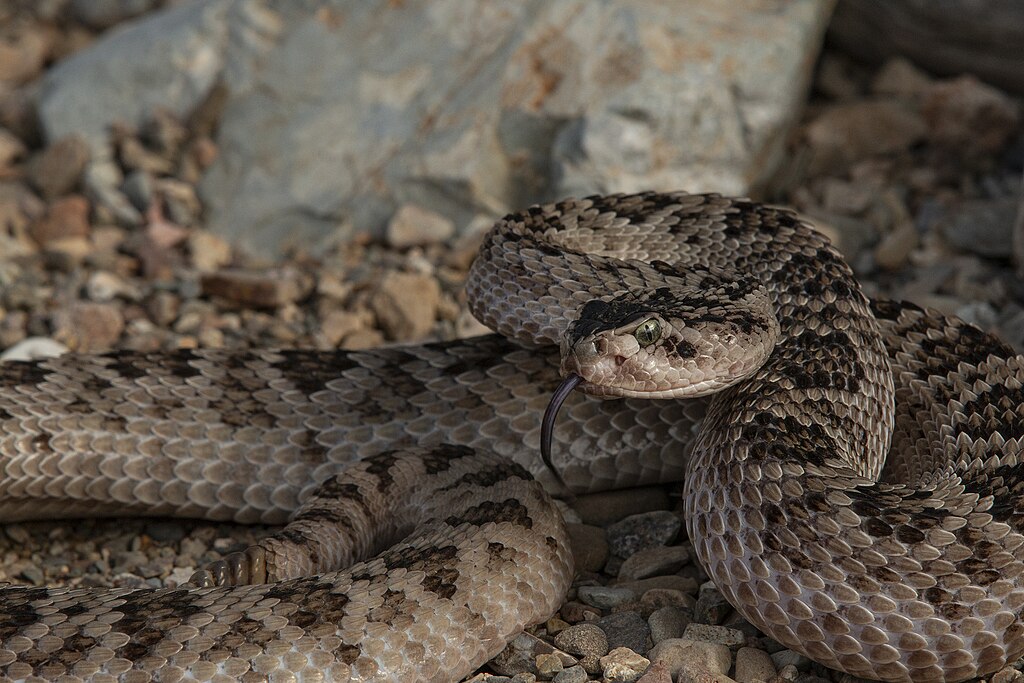
The acoustics of tail-vibrating mimicry involve fascinating physics that make the deception effective. When a non-venomous snake rapidly vibrates its tail against dry leaves, the resulting sound contains similar frequency patterns to actual rattlesnake rattles, typically in the range of 2-20 Hz for the tail movement itself, while the leaf contact creates higher-frequency sounds. High-speed video analysis has shown that some mimicking species can vibrate their tails at speeds remarkably similar to actual rattlesnakes, sometimes exceeding 50 Hz. The sound effectiveness depends greatly on the substrate; dry leaves and certain types of vegetation amplify and modify the vibrations to create the most convincing rattlesnake mimicry. Research using spectrograms has demonstrated that in optimal conditions, the acoustic profile of these mimics can be difficult to distinguish from actual rattlesnake sounds even for trained human ears, suggesting the deception is likely effective against a wide range of predators.
Juvenile Behavior Versus Adult Behavior
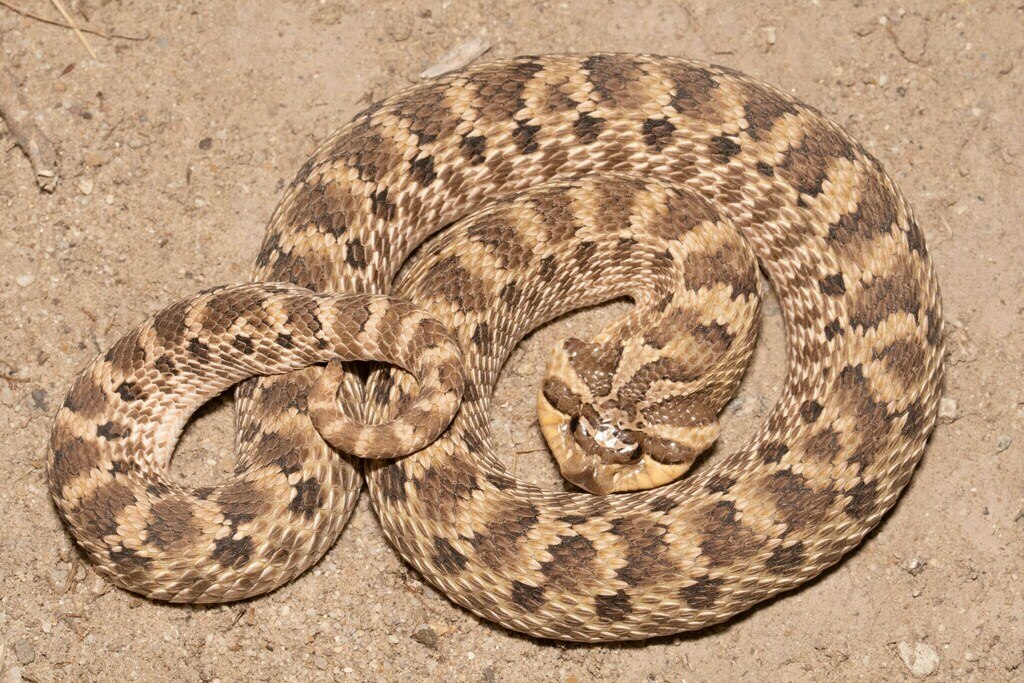
Interestingly, tail-vibrating behavior often shows variation between juvenile and adult snakes of the same species, with younger individuals typically more likely to employ this defensive tactic. Young snakes, being smaller and more vulnerable to a wider range of predators, rely more heavily on mimicry as a defense mechanism since they lack the size and strength of adults. Several studies have documented that juvenile rat snakes, racers, and kingsnakes vibrate their tails more readily and for longer durations when threatened compared to adults of the same species. As these snakes grow larger, many individuals appear to reduce their reliance on acoustic mimicry and instead depend more on size, strength, and other defensive mechanisms. This ontogenetic shift in defensive behavior suggests that the cost-benefit ratio of mimicry changes throughout a snake’s life history, with the greatest benefits realized during the vulnerable juvenile stages.
Geographic Variations in Mimicry

The prevalence and execution of tail-vibrating behavior in non-venomous snakes show fascinating geographic patterns that correlate strongly with rattlesnake distribution. In regions where rattlesnakes are common, non-venomous species tend to perform more convincing mimicry behaviors, suggesting localized evolutionary refinement of this adaptation. Research comparing Eastern rat snake populations from different regions has found that individuals from areas with high rattlesnake density exhibited more frequent and more vigorous tail-vibrating behaviors when threatened compared to conspecifics from areas where rattlesnakes are rare or absent. This pattern of geographic variation provides compelling evidence for the role of natural selection in shaping mimicry behaviors based on the prevalence of the model species. Similar geographic correlations have been documented in other mimicking species, suggesting parallel evolutionary trajectories across different snake lineages.
Kingsnakes: Immune Yet Imitative
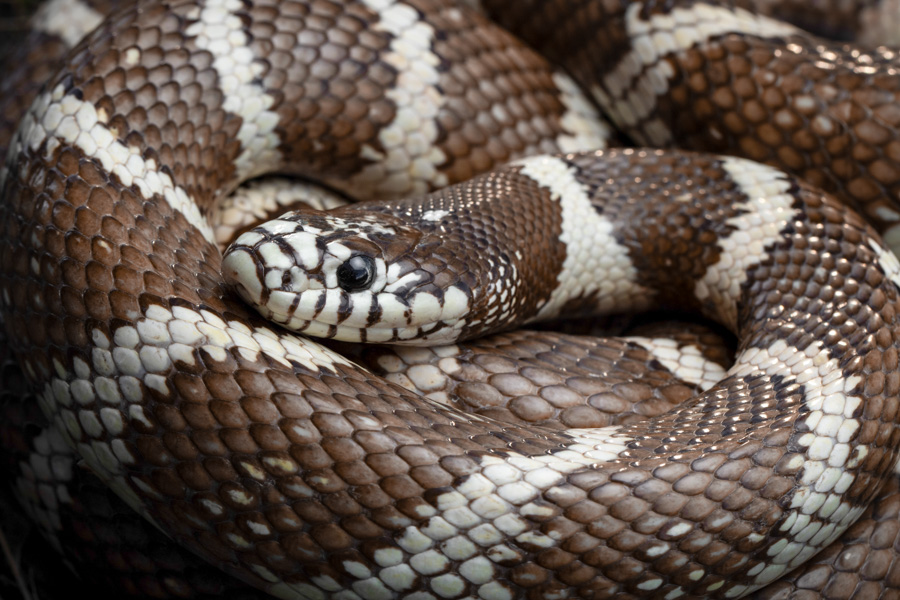
Kingsnakes (Lampropeltis spp.) present a fascinating evolutionary puzzle, as many species in this genus are not only rattlesnake mimics but also specialized rattlesnake predators. Species like the common kingsnake (Lampropeltis getula) possess a natural immunity to pit viper venom, allowing them to prey upon rattlesnakes, yet they still engage in rattlesnake mimicry by vibrating their tails against leaves when threatened. This seemingly contradictory behavior likely evolved as protection against other predators that avoid rattlesnakes but might prey on kingsnakes, such as hawks, coyotes, and larger snakes. The dual roles of rattlesnake mimic and rattlesnake predator make kingsnakes particularly interesting subjects for studying the complex evolutionary dynamics of mimicry systems. Their behavior demonstrates how defensive adaptations can remain valuable even in species that have evolved offensive capabilities against the very model they mimic.
Racers: Speed Combined with Deception
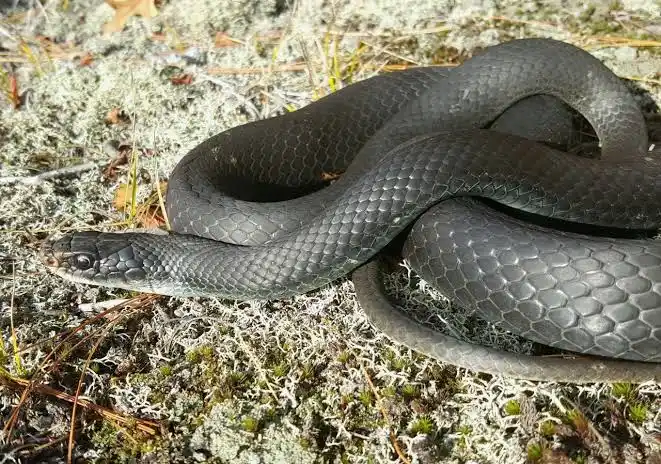
Racer snakes (Coluber constrictor) are aptly named for their impressive speed, yet these swift serpents also employ tail vibration against leaves as a defensive tactic when cornered or captured. Unlike some other mimicking species that may rely heavily on their deceptive displays, racers typically use tail vibration as a last resort when their primary defense, rapid escape, is not possible. When a racer does resort to tail vibration, the behavior is often accompanied by aggressive striking and musking (releasing foul-smelling secretions), creating a multi-modal defensive display. Young black racers, with their blotched pattern that fades to solid color as they mature, not only mimic rattlesnakes acoustically but also somewhat visually during their juvenile stage. This defensive strategy is particularly important for younger racers who haven’t yet developed the speed and stamina that characterize adults.
The Human Element: Misidentification and Conservation

The very mimicry that protects non-venomous snakes from natural predators can sometimes work against them when encountering humans. Many harmless snake species are killed by people who mistake their defensive tail vibration for confirmation that they’re dealing with a dangerous rattlesnake. This misidentification contributes to the unnecessary killing of beneficial predators that help control rodent populations and contribute to ecosystem health. Conservation education efforts increasingly focus on helping people distinguish between venomous species and their mimics, emphasizing the ecological importance of all snake species regardless of venom status. Some wildlife rehabilitation centers report regularly receiving injured non-venomous snakes that were attacked because their defensive tail vibration was misinterpreted as a sign of danger, highlighting the ongoing conservation challenges faced by these remarkable mimics in human-dominated landscapes.
The ability of various non-venomous snake species to vibrate their tails against leaves and create convincing rattlesnake sounds represents one of nature’s most elegant examples of Batesian mimicry. This adaptive behavior has evolved independently in multiple snake lineages, highlighting its effectiveness as a survival strategy. From the Eastern rat snake to the dramatic hognose, these mimics have refined their performances through natural selection, creating acoustic deceptions that effectively exploit the learned or innate fear responses of potential predators. As we continue to study these remarkable adaptations, we gain not only a deeper appreciation for the complex evolutionary processes that shape wildlife behaviors but also important insights that can inform conservation efforts for these often misunderstood reptiles. The next time you hear what sounds like a rattlesnake in the woods, remember – nature’s master of deception might be performing one of its most successful tricks.





